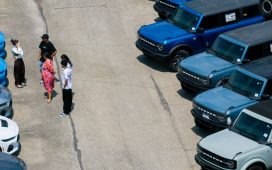The global annual demand for Li-ion batteries is expected to grow from 730 GWh to 5,100 GWh by 2030. This five-fold increase is driven by decarbonisation of mobility and energy systems, but also by existing uses of Li-ion batteries, such as in mobile phones. Securing predictable supply chains and the environmental integrity of decarbonisation is essential.
Here, NITI Aayog has proposed several measures, including royalties, tax benefits and PLI schemes, to support the processing and refining of critical minerals. In building up India’s recycling and reuse capacity, GoI must implement robust regulatory frameworks to ensure the bid to emerge as a global refining and recycling hub is done in an efficient and safe manner.
This effort must be accompanied by measures to formalise the recycling, upcycling and reuse of e-waste. A formal lifecycle approach to e-waste will not only help with access to materials but also improve the sector’s safety, health and job potential, mainly in the informal sector. Care must be taken to ensure incentives do not result in foreclosing other options, including vanadium- and sodium-based batteries. A broader approach is critical to ensure a competitive edge in the storage segment.











